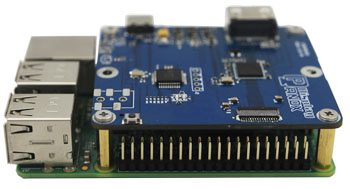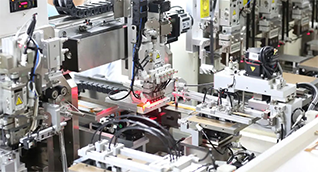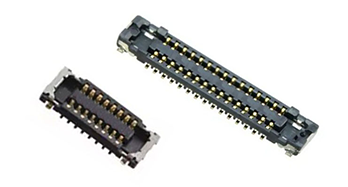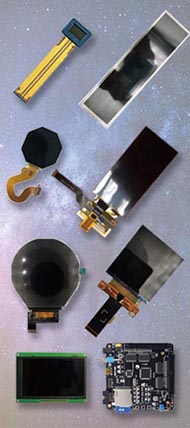It’s Not Just About Technology — It’s About How You Use It
OLED screens are widely used in smartphones, TVs, automotive displays, and more, thanks to their high contrast, deep blacks, and ultra-thin form factor. But a common question remains: “How long is the OLED screen lifespan?” The answer isn’t fixed — it depends on where and how you use the screen, as well as the underlying technology.
1. OLED Lifespan Across Different Devices
Smartphones & Tablets: 3-5 Years with Minimal Impact
In real-life use, avoiding high brightness and prolonged static content helps maintain performance. Brightness reduction of 20%-30% over 3 years is common but does not significantly affect viewing experience. Burn-in usually occurs when users display static content (like navigation apps) for extended periods in bright outdoor conditions, such as Samsung’s E6 panels or Apple’s Super Retina XDR. Lab tests show an LT50 (time for brightness to drop to 50%) of 50,000-100,000 hours — roughly 5.7 to 11.4 years with an average use of 5 hours per day.
Most current smartphones use flexible OLED screen.
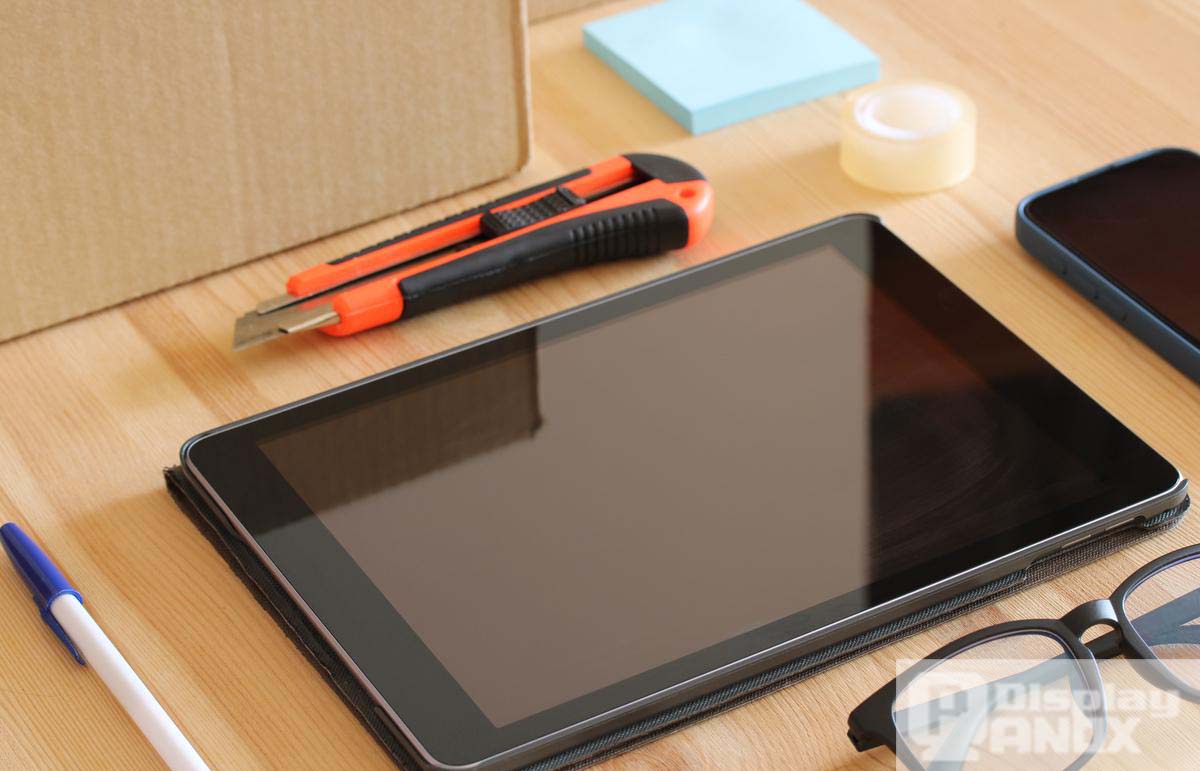
OLED TVs & Monitors: Lifespan Closely Linked to Content Type
OLED TVs and monitors typically use WOLED or QD-OLED technology,
WOLED (LG panels): LT50 of 30,000-50,000 hours (approx. 3.4-5.7 years).
QD-OLED (Samsung, Sony): Enhanced lifetime with LT50 of 50,000-80,000 hours.
Usage patterns are critical — news channels, surveillance feeds, or gaming HUDs can trigger burn-in within 2-4 years. However, dynamic content and lower brightness settings can easily extend lifespan to over 6 years.
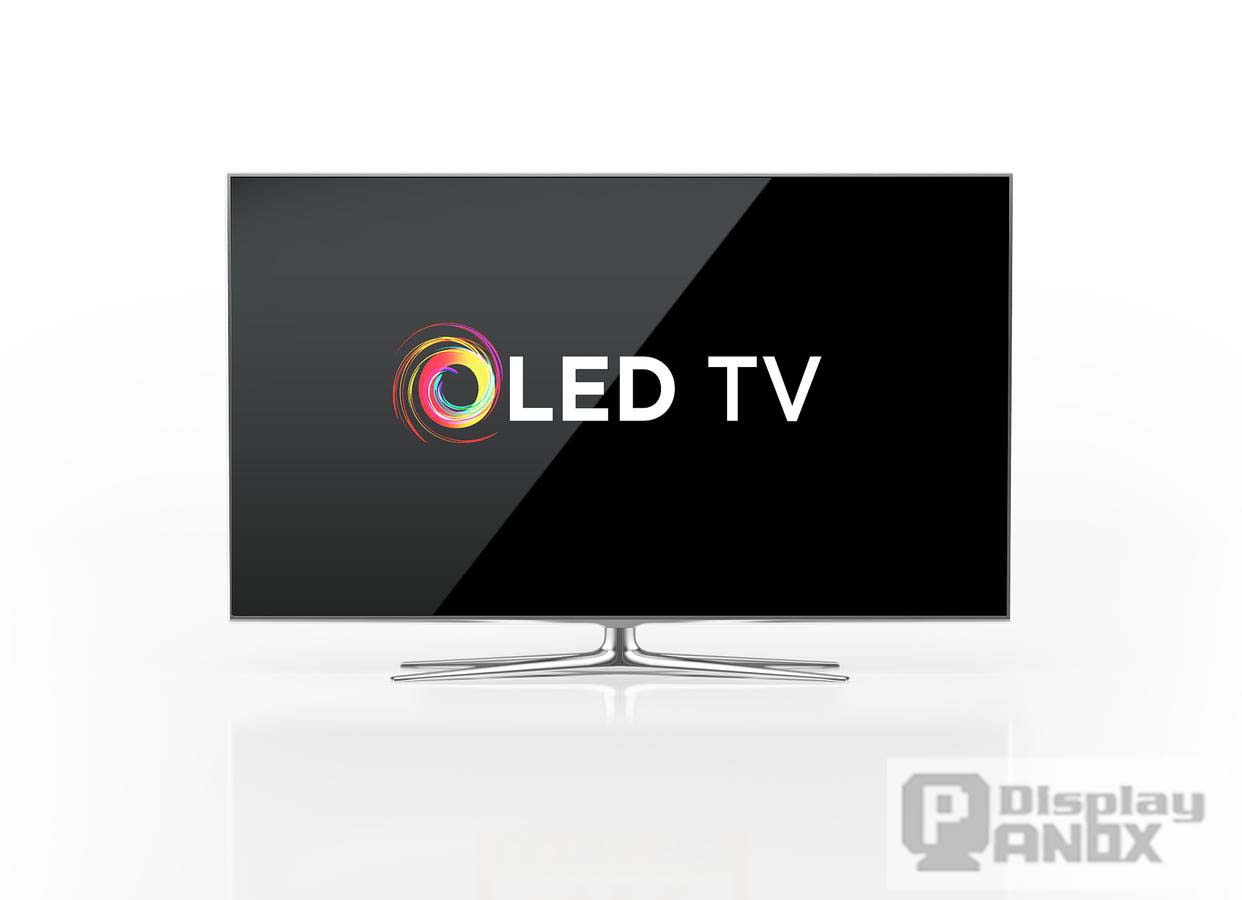
Automotive OLED Displays: Harsh Environments, Shorter Lifespan
Automotive OLED displays face extreme conditions, operating between -40°C and 85°C, often at brightness levels around 1000 nits. LT50 typically falls between 20,000-30,000 hours (about 2.3-3.4 years). However, dynamic brightness adjustment and pixel compensation technologies allow real-world lifetimes of around 5 years.
2. Key Factors Impacting OLED Lifespan
Emissive Material Sets the Lifespan Ceiling
OLEDs rely on organic light-emitting materials, with blue sub-pixels aging up to 3 times faster than red ones. Over time, this can cause color shifts. Recent advancements — such as phosphorescent doping and better encapsulation — have boosted OLED lifespan 3-5 times compared to early panels (which lasted around 10,000 hours).
Usage Habits Have a Major Impact
Higher brightness = shorter lifetime: For WOLED, LT50 is 50,000 hours at 100 nits, but drops to just 15,000 hours at 300 nits.
Static content is the main burn-in risk: Prolonged display of static elements like status bars or logos increases burn-in risk by 50%.
High temperature & humidity accelerate degradation: Exceeding 60°C or 80% humidity destabilizes materials. Ideal conditions are 10°C-35°C with <70% humidity.
Technical Optimizations Can Extend OLED Lifespan
Pixel shifting: Subtle image shifts (such as LG’s dynamic anti-burn-in) distribute pixel wear more evenly, extending lifetime by ~15%.
Adaptive brightness & dark mode: Using dark UI at night reduces pixel load and extends lifetime by ~20%.
QD-OLED blue load optimization: Quantum dot filters offload some of the blue light burden, improving lifetime by about 30% over traditional WOLED.
3. How to Maximize OLED Lifespan
Avoid Prolonged Static Content
Regularly change wallpapers and enable dynamic screensavers on TVs and monitors.
Enable auto-lock and hide status bars on smartphones to prevent static image retention.
Control Brightness & Usage Time
Keep smartphone brightness around 60%-70%, and TV brightness around 50%-60%.
Power off devices instead of leaving them in standby mode to reduce pixel stress.
Use Built-in Maintenance Features
Enable pixel refresh or OLED panel cleaning features (e.g. LG OLED TV’s weekly maintenance).
Activate color compensation features to mitigate color drift (e.g. Apple’s True Tone, Android’s display calibration modes).
4. OLED Lifespan Reference & Buying Tips
Real-World Lifespan Ranges
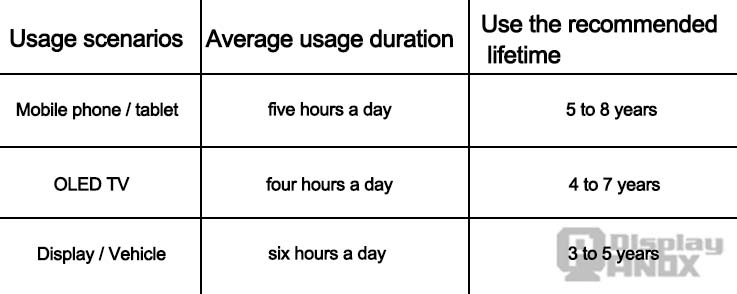
Buying Priorities Based on Lifespan
QD-OLED: Ideal for high-end users prioritizing color quality and long lifetime.
Flexible OLED (LTPO): Best for smartphones, balancing power efficiency and lifetime.
WOLED: Good for budget-conscious buyers, but avoid displaying static content for long periods.
By using OLED displays wisely, you can significantly extend their lifetime — often surpassing 5 years, well beyond the typical device replacement cycle. Smart usage habits matter even more than technical specs when it comes to maximizing OLED lifespan.













